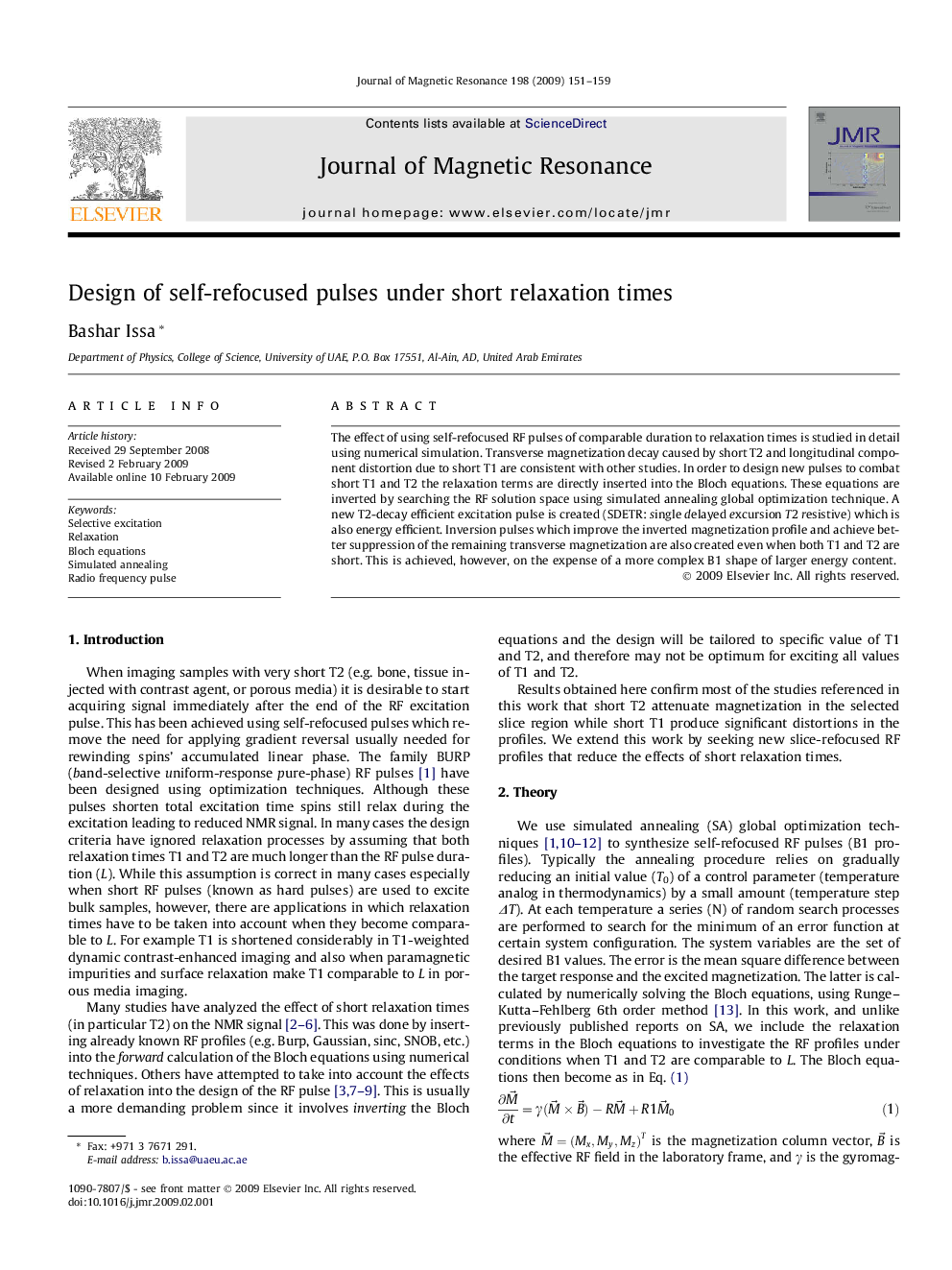| Article ID | Journal | Published Year | Pages | File Type |
|---|---|---|---|---|
| 5406910 | Journal of Magnetic Resonance | 2009 | 9 Pages |
Abstract
The effect of using self-refocused RF pulses of comparable duration to relaxation times is studied in detail using numerical simulation. Transverse magnetization decay caused by short T2 and longitudinal component distortion due to short T1 are consistent with other studies. In order to design new pulses to combat short T1 and T2 the relaxation terms are directly inserted into the Bloch equations. These equations are inverted by searching the RF solution space using simulated annealing global optimization technique. A new T2-decay efficient excitation pulse is created (SDETR: single delayed excursion T2 resistive) which is also energy efficient. Inversion pulses which improve the inverted magnetization profile and achieve better suppression of the remaining transverse magnetization are also created even when both T1 and T2 are short. This is achieved, however, on the expense of a more complex B1 shape of larger energy content.
Related Topics
Physical Sciences and Engineering
Chemistry
Physical and Theoretical Chemistry
Authors
Bashar Issa,
